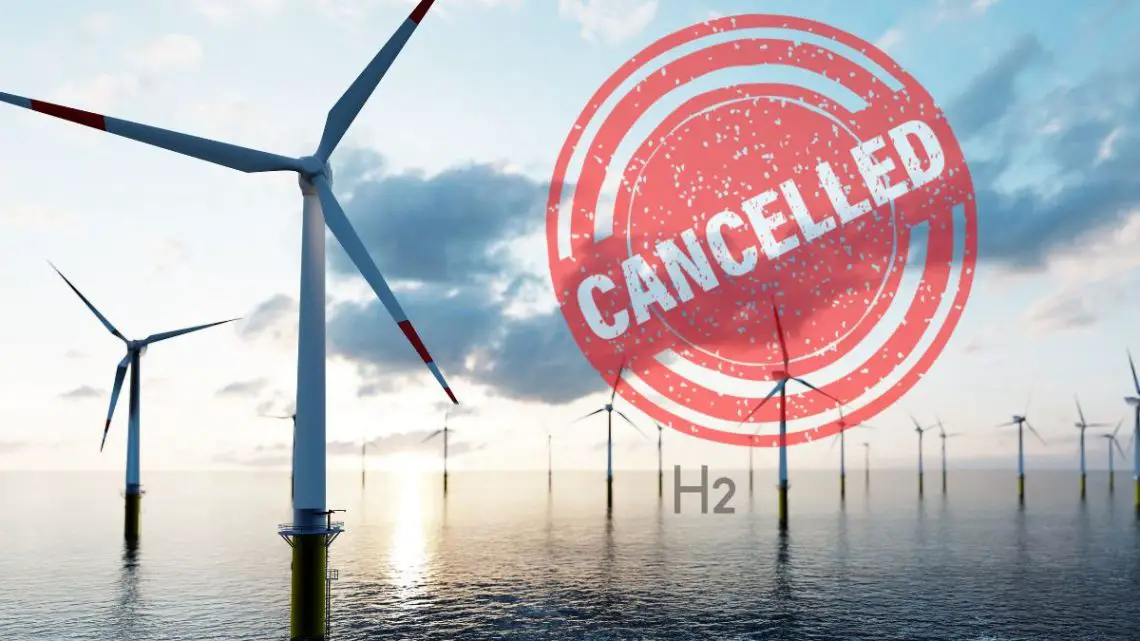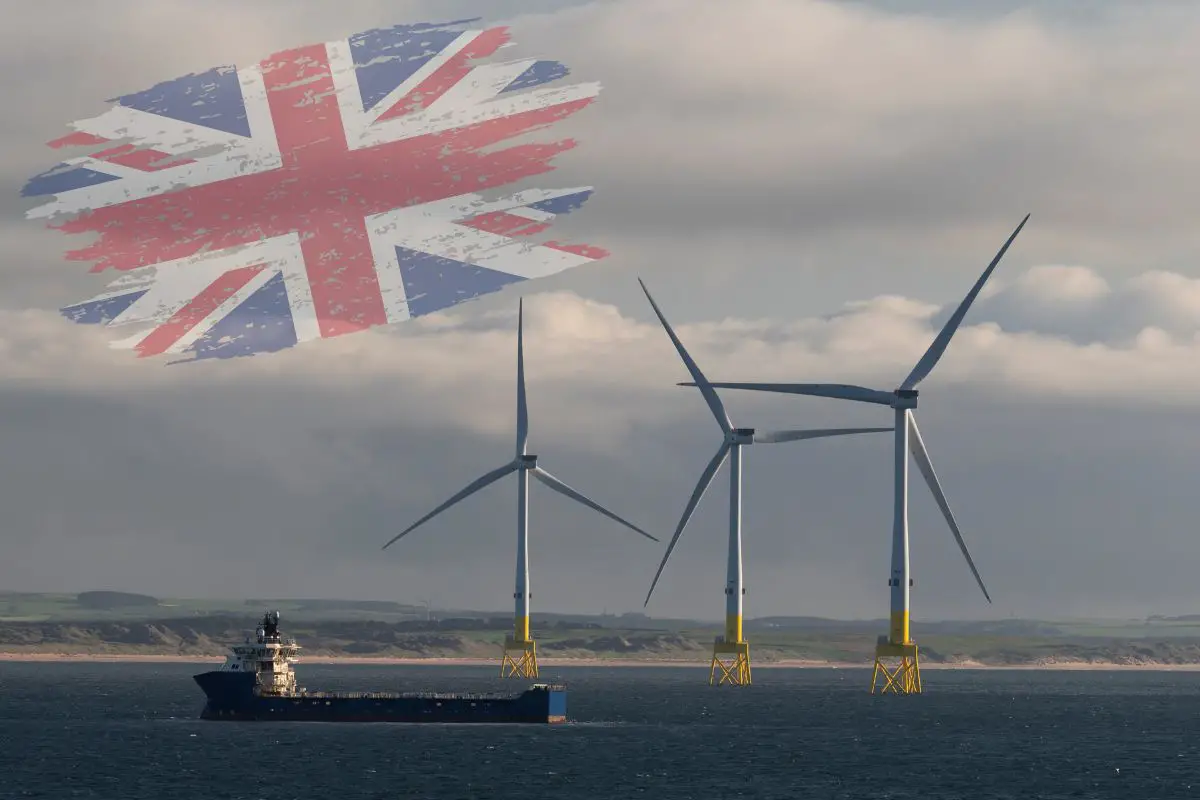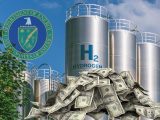
Vattenfall Pulls Plug on Offshore Hydrogen Production Project
March 18, 2024The Swedish utility is abandoning the endeavor after nearly two years.
Almost two years ago, Vattenfall began developing a hydrogen production project offshore Aberdeen, Scotland. The purpose of the now sacked Hydrogen Turbine 1 (HT1) project was to explore the potential of generating hydrogen from offshore windfarms and transporting it to shore.
A unique project.
The HT1 project was designed around the utility’s 97 megawatt Aberdeen offshore wind farm, the European Offshore Wind Deployment Centre (EOWDC). Vattenfall’s offshore wind farm is equipped with eleven 8.8 megawatt operational wind turbines.
The hydrogen production project was unique because an electrolyzer had been added directly onto one of the turbines. This made it the world’s first offshore wind turbine to directly produce hydrogen.
When it was first announced, the plan was to generate enough hydrogen daily to power a hydrogen bus travelling a distance of 24,000 kilometers (14,912.9 miles). Also, part of the plan was to build a pipeline and other specialist infrastructure that would allow the hydrogen produced at sea to be piped to shore at Aberdeen Harbor. This was to be completed ahead of initial operation slated for 2025.
Improving hydrogen production and development in the UK.
The UK’s Department for Energy Security and Net Zero partly funded the project via the Low Carbon Hydrogen Supply 2 funding program. Vattenfall’s offshore hydrogen production project HT1 was in support of creating a new regulatory and consenting regime by the UK Government for the offshore transportation and storage of hydrogen.

Although Vattenfall has decided to conclude the development phase of the project, the company is satisfied with what has been achieved, as it helped to clarify the roles and responsibilities of interlinking regulators. This is believed to be critical to the development of the UK’s future renewable hydrogen market.
According to Country Manager for Vattenfall in the UK, Lisa Christie, the environmental and technological progress that was made will allow for more industry advances toward creating a “thriving offshore hydrogen production market.”
Vattenfall plans to continue exploring fossil-free hydrogen production.
 Though it has closed the chapter on HT1, the company has said it is continuing to explore clean hydrogen production.
Though it has closed the chapter on HT1, the company has said it is continuing to explore clean hydrogen production.
This is no surprise as the Swedish utility is no stranger to promoting clean hydrogen. It is actively involved in developing innovative solutions to decarbonize heavy emitting industries (e.g., steel, chemicals, refiners, transport and agriculture) and its own operations through fossil-free hydrogen. The company wishes to be a catalyst for this development and isn’t shy about promoting this fact.
Last year, in an effort to capture people’s attention and raise awareness about clean power, Vattenfall went so far as to create a fossil-free hydrogen beauty campaign with English model and actress, Cara Delevingne.
FAQs about Wind Energy and Hydrogen Production & Vattenfall’s HT1 Project
1. How is wind energy used to produce hydrogen? Wind energy can be used to produce hydrogen through a process called electrolysis. This involves using electricity generated by wind turbines to split water into its component elements, hydrogen and oxygen. The hydrogen can then be captured and stored for later use as a clean fuel source.
2. What was the purpose of Vattenfall’s HT1 project? The HT1 project, initiated by Swedish utility company Vattenfall, aimed at exploring the potential of generating hydrogen from offshore wind farms and transporting it to shore. The project revolved around Vattenfall’s 97 megawatt Aberdeen offshore wind farm, the European Offshore Wind Deployment Centre (EOWDC).
3. What made the HT1 project unique? The uniqueness of the HT1 project lay in the integration of an electrolyzer directly onto one of the turbines, making it the world’s first offshore wind turbine to directly produce hydrogen. The plan was to generate enough hydrogen daily to power a hydrogen bus travelling a distance of 24,000 kilometers.
4. What was the outcome of the HT1 project? After nearly two years, Vattenfall decided to conclude the development phase of the project. However, the company is satisfied with the progress made, as it helped clarify the roles and responsibilities of interlinking regulators – a crucial aspect for the development of the UK’s future renewable hydrogen market.
5. Will Vattenfall continue exploring hydrogen production? Yes, despite concluding the HT1 project, Vattenfall plans to continue exploring clean hydrogen production. They are keen on developing innovative solutions to decarbonize heavy emitting industries and their own operations through fossil-free hydrogen.
6. What was the significance of Vattenfall’s fossil-free hydrogen beauty campaign? In an effort to raise awareness about clean power, Vattenfall created a fossil-free hydrogen beauty campaign with English model and actress, Cara Delevingne. This initiative underscores the company’s commitment to promoting clean hydrogen as a solution for decarbonization.



 HFN News is your leading source for fresh hydrogen and renewable energy updates. Amid the fast-paced growth of hydrogen companies, we provide top-notch news and insights about this exciting sector. Our coverage spans from hydrogen cars to global sustainable initiatives, and we highlight the latest in green jobs and developing hydrogen hubs. We invite you to share your local hydrogen news and explore today’s renewable energy job listings on our site. Thanks for choosing HFN News as your trusted guide to the hydrogen and renewable energy world!
HFN News is your leading source for fresh hydrogen and renewable energy updates. Amid the fast-paced growth of hydrogen companies, we provide top-notch news and insights about this exciting sector. Our coverage spans from hydrogen cars to global sustainable initiatives, and we highlight the latest in green jobs and developing hydrogen hubs. We invite you to share your local hydrogen news and explore today’s renewable energy job listings on our site. Thanks for choosing HFN News as your trusted guide to the hydrogen and renewable energy world!